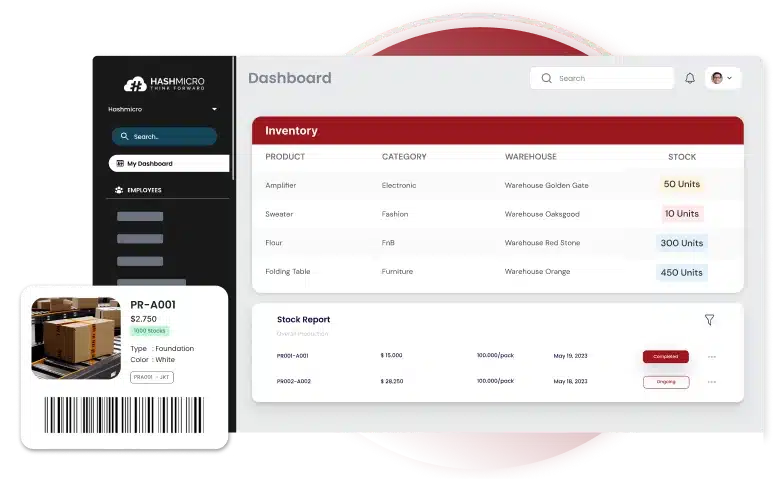Sustainable procurement is no longer a mere “good thing to do” for businesses—it’s now a critical part of operations. With increasing pressure to adopt sustainable practices, many companies struggle to ensure that their procurement strategies align with both environmental standards and long-term stability.
Without a clear strategy for sustainable procurement, you risk partnering with vendors who don’t align with your environmental values, potentially harming your brand’s reputation and future growth. The uncertainty surrounding how to balance cost, quality, and sustainability often leads to missed opportunities for improvement.
As we discuss the basics of developing a more sustainable procurement process, you’ll learn what sustainable procurement is, why it is important, and how to implement it strategically in your day-to-day procurement process.
Key Takeaways
|
Table of Content:
Table of Content
What is Sustainable Procurement?
Sustainable procurement combines sustainable development principles into purchasing decisions and processes while fulfilling the business’s and its stakeholders’ needs. This includes environmentally friendly products and materials; suppliers are held accountable for ethical conduct.
While cost, quality, and delivery timelines are still important, sustainable procurement adds new priorities. Businesses must look beyond the immediate transaction to consider the full life cycle of products, from resource extraction to end-of-life disposal.
This includes cutting carbon emissions, minimizing waste, and upholding fair labor practices across the supply chain. Ultimately, it’s about balancing the economic, environmental, and social aspects of procurement.
This approach builds resilience, future-proofs their operations, and meets the growing expectations of consumers and investors who are increasingly drawn to brands committed to sustainability. This kind of procurement isn’t just good for the world; it’s good for business.
Why is Sustainable Procurement Important?
Sustainability offers operational and cost benefits, but brands must remember that consumers will choose them based on their perceived commitment to environmental, social, and governance (ESG).
Companies embrace sustainable practices because the stakes are high. Both consumers and investors expect businesses to prioritize sustainability, and they’ll favor those that do.
IBM research shows that nearly 80% of consumers value sustainability, with 60% willing to adjust their shopping habits to reduce environmental impact. Gen Z is driving this change, and the numbers will continue to grow.
Climate change is now impossible to ignore. Once-rare events like wildfires, floods, and superstorms are becoming more common, placing environmental issues front and center in daily discussions. Climate change is the most pressing global concern for Gen Z and Gen Alpha, who will face these challenges for decades.
Commodity production is a major driver of the environmental crisis, with nearly 90% of deforestation linked to agriculture. Aware of this connection, consumers are adjusting their behavior and “voting with their wallets.” Following cattle-related fires, some even turned to vegetarianism.
These trends will persist as future generations become more aware of the risks tied to consumer goods.
Investors are also increasingly focused on sustainability, moving capital to ESG funds to protect against consumer backlash and business disruptions. Companies that don’t adapt could risk their stock prices.
Companies owe it to shareholders to adapt, and sustainable procurement is one of the most straightforward ways to do so. While larger investments like wind turbines matter, eliminating risky suppliers is a quicker way to mitigate environmental risks—a core objective of procurement.
Three Major Aspects of Sustainable Purchasing
Sustainable procurement rests on three main aspects: economics, environment, and social responsibility.
- Economics: Justifying costs is crucial from the start, especially with global disruptions, which make companies cautious about investments with unclear returns. As a result, businesses prioritize sustainable investment practices that drive revenue while maintaining a low total cost of ownership (TCO) throughout the product’s life cycle.
- Environment: Companies must align with local regulations that require lower CO2 emissions and a minimized carbon footprint across the procurement process. The goal is not just sustainability, but also ethical practices that ensure long-term environmental responsibility.
- Social and ethics: Finally, businesses must uphold their social commitments within the sustainable procurement framework. This often involves safeguarding human rights, preventing child labor, and ensuring health and safety standards are met, both within the organization and across its partners’ ecosystems.
Balancing these three aspects is crucial yet difficult. Hence, a comprehensive strategy, coupled with tools to enforce it, is essential. Some tools, like a procurement ERP, provide a 360-degree view of every procurement process, which significantly helps ensure sustainability.
Curious how this software will do this? You can try the free demo by clicking on the banner below.

Sustainable Procurement Requirements
Sustainable procurement has become a growing priority for organizations, with many setting bold targets to reduce their carbon footprint and minimize environmental harm. Procurement leaders must stay in tune with these goals, ensuring that the company’s purchasing strategies align with its sustainability objectives.
Implementing sustainable procurement can make a real difference, but certain steps need to be taken:
- Leadership Commitment: Senior management must show a clear commitment to sustainability and communicate its importance across the organization. This includes initiatives to adopt sustainable practices that permeate all levels of procurement.
- Stakeholder Engagement: Suppliers, customers, and employees must support the company’s sustainability goals and expectations.
- Procurement Policy: Companies should have a procurement policy that includes clear guidelines for evaluating suppliers based on their environmental and social impact.
- Supplier ESG Evaluation: Procurement teams must assess suppliers’ ESG audit performance, disqualifying those that don’t meet sustainability standards.
- Supplier Performance Monitoring: It’s crucial to regularly monitor supplier performance to ensure they continue to meet sustainability criteria.
- Training and Awareness Programs: Procurement teams need ongoing training to fully grasp the importance of sustainability, as it’s essential for future success.
- Sustainability Reporting and Communication: Reporting progress on sustainability shows transparency and demonstrates to all stakeholders, clients, and partners the company’s commitment to making a positive impact.
Challenges of Sustainable Procurement
Sustainable procurement offers many benefits but also faces several significant challenges. Here are some common issues businesses encounter when adopting these practices:
- Cost and Budget Constraints: Sustainable products often have a higher price, and estimating costs can be tricky, especially in the short term. However, long-term savings and risk reductions typically follow once sustainable practices are in place.
- Supplier Engagement: Getting suppliers to meet sustainability standards can be tough, as some may lack resources or hesitate due to potential cost increases. Building strong relationships and providing incentives can help address this challenge.
- Supply Chain Transparency: Full visibility into the supply chain is critical, but many companies struggle to trace product origins or verify sustainability claims. Advanced technology and regular audits are often needed to manage this complexity.
- Internal Resources and Knowledge: Implementing sustainable practices requires time, training, and expertise, which can be scarce. Without the right skills and leadership support, maintaining these initiatives is difficult.
- Regulatory and Political Barriers: Inconsistent regulations and weak government support can slow adoption. Regions with strong political backing for sustainability, like Europe, tend to have more success with these practices.
Despite these challenges, overcoming them is essential for businesses aiming to improve both their environmental and social impact. Using procurement system can make this easier by simplifying supplier checks and automating compliance.
Strategies for Effective Sustainability Procurement
Building sustainability standards for your business takes time and careful planning. It presents unique challenges and requires strong change management. To shift towards a sustainable procurement strategy, consider these six steps:
- Set clear sustainability goals: Start by identifying the key outcomes you want to achieve, such as reducing waste, cutting water usage, lowering emissions, or promoting supplier diversity. Involve key stakeholders, from executives to legal and manufacturing teams, to align on these goals.
- Create sustainability standards: Develop a framework for evaluating new and existing suppliers. Based on the goals you identified, set clear standards like carbon reduction, energy efficiency, waste management, and supplier diversity. Aim for steady improvements across the supply chain.
- Review your current supply chain: Assess how well your existing suppliers meet your new standards. Engage with them to understand their sustainability goals and use this information to guide future contracts. Streamline your vendor list to reduce secondary emissions.
- Implement a sustainable procurement policy: With your goals and standards in place, start implementing your plan. Focus on gradual progress rather than perfection, and adjust the policy as contracts are renewed and objectives become clearer.
- Educate stakeholders: Ensure that everyone involved, especially buyers and stakeholders, understands the new sustainable practices. Pair this with a procurement process that offers full visibility across all purchases.
- Measure and improve: Sustainability is an ongoing effort. Regularly review your vendors’ performance to ensure they meet your benchmarks. Conduct internal audits to confirm your business is meeting its sustainability objectives.
These steps will help your business build a sustainable procurement strategy that evolves over time.
How Procurement Software Supports Sustainable Procurement
Procurement visibility is key to achieving sustainability, and HashMicro’s procurement software offers precisely that. With its comprehensive procurement management module, companies can streamline their purchasing process, eliminate redundancies, and minimize errors, all while supporting sustainability goals.
HashMicro helps businesses take control of their procurement by:
- Purchasing from trusted, pre-approved suppliers to ensure ethical sourcing.
- Gaining insights into purchasing patterns to make smarter, data-driven decisions.
- Reducing waste and unnecessary spending by optimizing procurement workflows.
This procurement software also offers advanced features that make sustainable purchasing, as well as procurement progress in general, easy and effective:
- Vendor Portal: This allows for digital negotiations and transactions between companies and vendors. It improves transparency and reduces the reliance on physical paperwork, contributing to more sustainable operations by reducing waste.
- Automatic Vendor Rating: By automatically assessing vendors based on punctuality, pricing, and service completeness, companies can prioritize vendors who meet sustainability standards, ensuring consistent environmental and social responsibility across their supply chain.
- Periodic Vendor Rating Review: Regularly evaluating vendors helps maintain accountability. Vendors who consistently meet sustainability criteria can be favored, while those who don’t can be addressed or replaced.
- Cost Savings Tracking and Reporting: Tracking cost savings helps companies optimize procurement and reduce waste, making their processes more resource-efficient—key for sustainability.
- Budget Tracking & Limit per Purchase: This feature ensures that companies stay within their planned resource usage, preventing unnecessary purchases and reducing overconsumption, which aligns well with sustainable procurement practices.
With HashMicro, you’re not just enhancing efficiency—you’re transforming the way you do business. By aligning your procurement processes with sustainability goals, you’re setting your company up for long-term success while making a positive impact on the planet.
Conclusion
Sustainable procurement focuses on making environmentally responsible purchasing decisions that balance cost, quality, and ethics. It ensures your supply chain aligns with environmental and social standards, benefiting both the planet and long-term business success.
For Singaporean businesses, HashMicro’s procurement software is the perfect tool to declutter their efforts. With features like automatic vendor rating and cost-saving tracking, you can cut down on waste, source responsibly, and make better purchasing decisions—all in one platform.
HashMicro simplifies sustainability while boosting procurement efficiency. You’ll be future-proofing your business while contributing to a greener world. With HashMicro, you can make smarter buying decisions without hassle.
Why wait? Book your free demo now and see how effortlessly you can level up your procurement process!

FAQ about Sustainable Procurement
-
What are the key elements of sustainable procurement?
Sustainable procurement strategies include adopting a holistic approach, integrating data for better decisions, investing in suppliers’ benefits through “paying it forward,” and engaging stakeholders in the process.
-
How do you measure sustainability in procurement?
Key performance indicators for sustainable procurement include reductions in CO2 emissions, energy consumption, water usage, waste, and plastic use, along with improvements in material efficiency and noise pollution levels.
-
What are the disadvantages of sustainable procurement?
Common barriers to sustainable procurement include resistance from senior staff, limited resources and time, lack of supplier support, increased costs, and challenges in accessing the right technology.
-
What is an example of sustainable procurement?
Procurement sustainability can be enhanced by sourcing raw materials closer to production sites, increasing the use of recycled and upcycled materials in products and packaging, and minimizing emissions in raw material transportation.


































